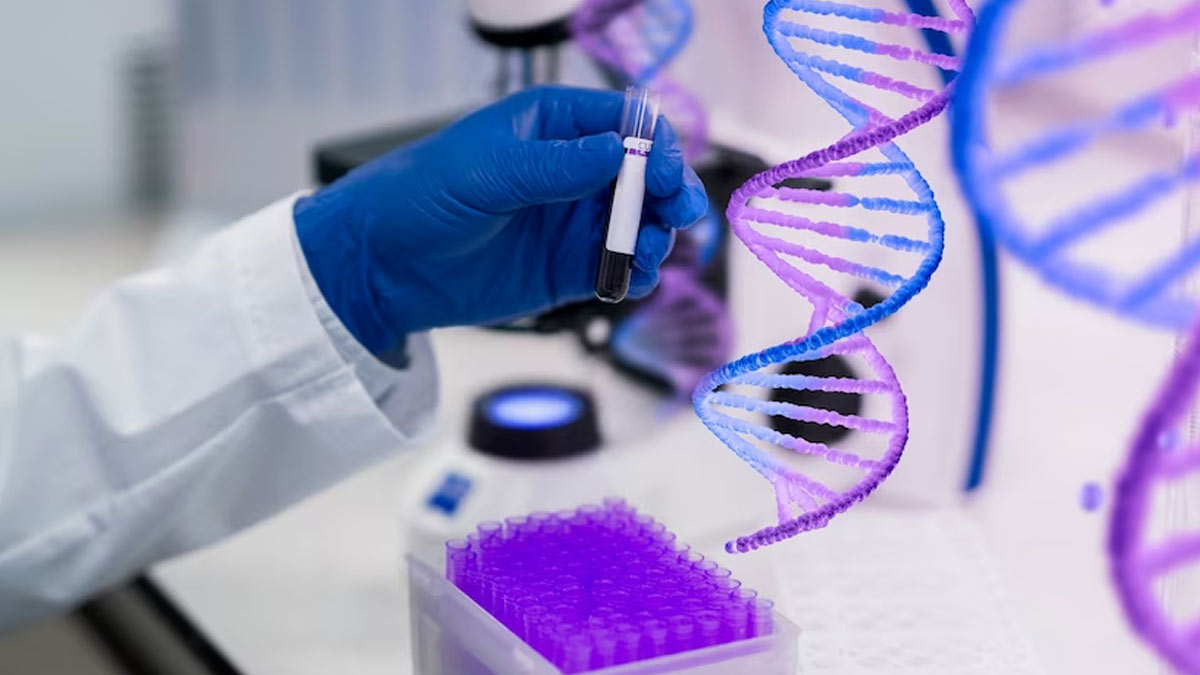Confronting genetic disorders with technological innovations & medical advancements
October 31, 2024 | Thursday | Features
Whole Exome Sequencing (WES) is an essential tool in healthcare, making possible the identification of a genetic cause for disease with increased speed and specificity. This article expands upon the revolutionary technology that makes this process possible, and its application in neonates and foetuses.
image credit- shutterstock
Within India genetic medicine is gaining popularity, yet the size of the market for next-generation sequencing (NGS) remains relatively small. Valued at $22.02 billion in 2024 in India, the NGS market is projected to grow to $33.45 million by 2030.
Industrial innovation is essential to this medical advancement- the scaled production of the technologies developed for DNA Extraction (manual and automated), Quality Checks using NanoDrop spectrophotometer, gel electrophoresis, and Qubit fluorometer, the process of Library Preparation from precapture to postcapture processes, and the bioinformatic analysis of sequence files collected will make disorder-specific testing accessible to all in the near future.
In fact, the cost for WES is already falling as it becomes more widely used, with running a single WES costing about £382 per exome, which is ∼3.5 factor lower compared to the lowest cost estimate for WGS using HiSeq: £1,312.
NovaSeq 6000 is the largest possible sequencer that is able to sequence a total of 384 samples in one run which lasts approximately 44 hours. Each machine has ‘flow cells’ which are slides that contain the samples. This flow cell has four lanes which allows for 96-plex per lane.
Smaller sequencers, which can process fewer samples at a time, but run faster include the MiniSeq, NextSeq 550 and IonGeneStudio. They all function on the same premise, with flow cells that put the samples into the sequencer. MiniSeq can be used to analyse both DNA & RNA making it versatile, whilst NextSeq 550 performs whole genome sequencing in short run times. The IonGeneStudio leverages semiconductor sequencing to complete small sample sequencing in less than 24 hours, with maximum 45 minutes hands-on involvement. These machines increase the affordability of WES, making it progressively more accessible to the public. Each of these machines come with kits that contain assay information, and data analysis guidance. As a whole these machines represent individually packaged & self-sufficient testing systems for finding rare genetic disorders and classifying them.
The data from this technology is classified into variants of pathogenic genetic disease strains, which is incredibly useful for developing genome libraries and enhancing knowledge about certain conditions. It’s also extremely helpful in cases of life-threatening conditions, which can be prevented by finding out in the neonatal or foetus stage of pregnancy when termination is still an option. The strategic combination of data analysis and raw processors allows these machines to be useful in remote locations to produce detailed gene sequences and their interpretations.
Its practical value is made evident by real-world clinical cases demonstrating its impact on diagnostics. In one instance during our research work at LifeCell International, WES identified Neurofibromatosis Type 1 (NF1) and a pathogenic DMD variant using the IonGeneStudio sequencer, allowing for early diagnosis and additional testing through Multiplex Ligation-dependent Probe Amplification (MLPA).
In another, a foetus showing signs of chondrodysplasia punctata was diagnosed with the help of the NovaSeq 6000, which enabled further testing like Sanger sequencing and parental segregation analysis.
Similarly, WES and mitochondrial genome sequencing were used to diagnose Rauch-Steindl Syndrome in a fuetus with growth restriction, despite no family history of genetic disorders, while the MiniSeq sequencer facilitated additional genetic analyses and the NextSeq 550 rapidly diagnosed a Noonan syndrome-like disorder with loose anagen hair-1 after other tests failed to provide insights.
These examples demonstrate how NGS delivers rapid, accurate diagnoses for rare/ otherwise undetected genetic disorders, informing decision-making by parents and clinicians alike.
There is, moreover, an increasing need for genetic counseling which can be attributed to the rapidly advancing technologies for testing, and their increasing accessibility. The primary aim of genetic counseling is to educate and support families who require genetic tests and/or those who have been diagnosed with genetic disorders, outlining the risks and benefits of opting for a genetic test and providing support throughout the process.
In India, it comes with the added caveat of not being able to reveal the foetus’s gender. Genetic counselors must present information objectively, avoiding strong suggestions while discussing potential next steps, and remaining unbiased and unattached throughout sessions.
All in all, innovations in DNA isolation and sequencing have revolutionised the diagnosis of rare genetic disorders. This article provides a comprehensive overview of the industrial advancements in the genetic testing process from DNA isolation, to sequencing, to patient interaction. These highlight the importance of WES and NGS in diagnosing complex genetic disorders, and demonstrate the high quality, speed, and accessibility of WES, as a result of industrial innovations.
Shivika Gupta & Pranati Kompalli










